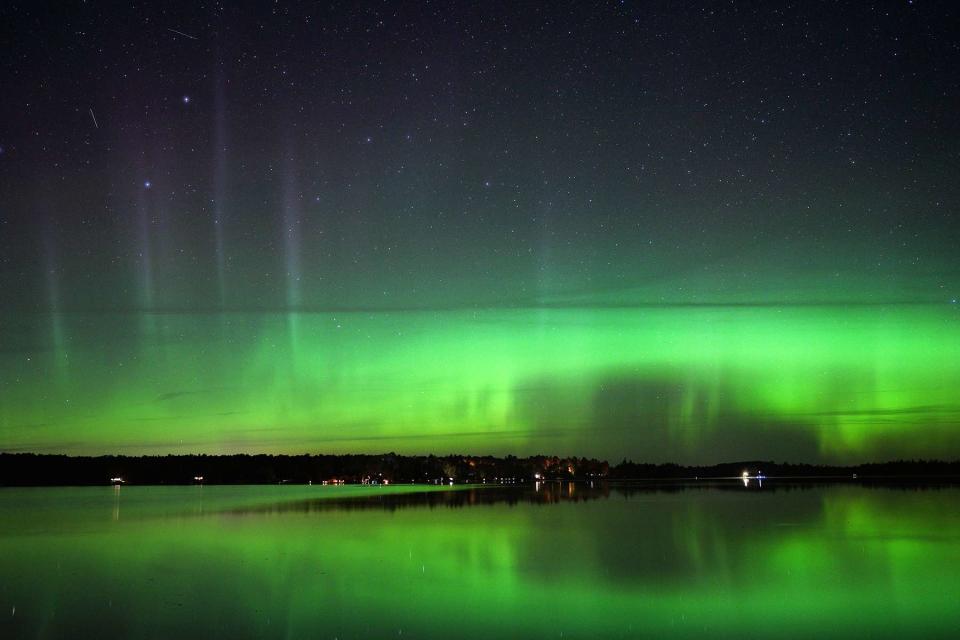You May Be Able to See the Northern Lights in the U.S. This Weekend
Keep an eye on the sky on Saturday.

Star Tribune via Getty Images
Northern lights are seen in the night sky near Canyon, Minn. in August of 2019.The northern lights are putting on a show in the high latitudes, and may be heading far south enough to be visible in the northern United States this weekend.
Earlier this week, the Space Weather Prediction Center (SWPC) of the National Oceanographic and Atmospheric Administration (NOAA) issued several alerts for "Type II radio emissions" from the sun. Such emissions are commonly associated with solar events known as coronal mass ejections. Those events send energized particles flying towards the Earth, where our magnetic field "catches" them and turns them into the aurora.
SWPC then issued a watch for a moderate G2 geomagnetic storm for October 1, and a watch for a minor G1 geomagnetic storm tonight and on October 2. Those storms are associated with planetary K index (Kp) ratings of 6 and 5, respectively — Kp ratings indicated the likelihood of seeing the aurora are issued on a scale of 0 to 9, with higher numbers indicating higher levels of geomagnetic activity.
"Aurora may be seen as low as New York to Wisconsin to Washington state," wrote the SWPC in the watch.
The Geophysical Institute at the University of Alaska, Fairbanks, predicts that the northern lights may be "visible low on the horizon from Salem, Boise, Cheyenne, Lincoln, Indianapolis and Annapolis" on Saturday.
Now before you run outside expecting to see bursts of colors high in the sky, it might be best to temper your expectations. If the aurora is indeed visible from the Lower 48, it'll be seen lower on the horizon, as the Geophysical Institute mentions in its prediction, and it'll likely be a somewhat dim show.
Still, it's a chance to see the northern lights! NOAA suggests checking for the aurora between 10 p.m. and 2 a.m. local time, when the lights are typically most active — you can see a 30-minute aurora forecast here. Just remember that you'll need to get as far away from light pollution as you can to have the best chance at seeing the northern lights.
Now if you want to see a truly breathtaking northern lights display, you'll have to head much farther north, to Alaska or Canada. You can check out our guide to the northern lights for more tips on seeing the aurora!

